Engine oil manufacturers typically describe or specify an engine oil by its properties and characteristics. A specific engine oil’s data sheet will specify its performance capabilities and its viscosity. When establishing the correct viscosity motor oil for a specific diesel engine, there are tow parameters that have to be determined. The first parameter is what is the highest possible ambient temperature the engine will operate under and the second is what is the lowest startup temperature.
Both these parameters should be found in your vehicle’s owner’s manual. The OEM will create a chart of recommended engine oil grades for diesel engine operations that is based on their experience and educated guesses of the ambient temperature conditions that engine is likely to experience. This blog post will try to provide information that clears up what some of the motor oil classification designations mean and hopefully clear up any confusion so as to make it easier to understand the various engine oil grades for diesel engines.
What Do All These Numbers and Letters Actually Mean?
It can be quite confusing and frustrating in determining what are the best engine oil grades for diesel engine operations. With basic understanding of what these letters and numbers mean, choosing the correct engine oil grade for your diesel engine will make sense and help you make the correct choice. Let’s take a look at a typical engine oil recommendation chart.

For example, let’s take a look at the first part of a multi-viscosity diesel engine oil such as a 10W30 or a 15W50. An SAE 10W or an SAE 15W means that these lower numbers are better for startup in cold weather temperatures. What does the “W” stand for? The “W” means it is for winter. The number seen in front of the letter “W” designates it as a cold weather viscosity. When temperatures are colder, an oil needs to be less viscous and flow easier during colder temperatures and cold dry starts.
Let’s compare two SAE W oils, a 10W and a 15W. The 10W engine oil has a lower viscosity than a 15W. This 10W will flow much easier in colder temperatures than the thicker 15W. Next, let’s look at the two viscosities to the right of the “W”. These higher numbers to the right of the “W” shows the oil’s viscosity during high temperature operations. The higher the number, the thicker or more viscous the oil will be.

On the engine oil recommended chart, this higher viscous oil can be seen at these higher temperatures. A typical oil recommendation chart will also show single grade engine oils that do not utilize the letter “W”. These mono or single grade SAE oils are most of the time used for higher ambient temperatures.
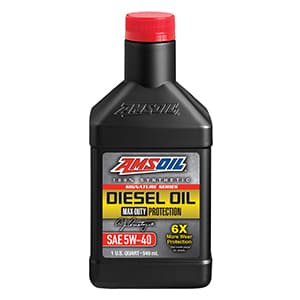
Let’s take a look at a multi-viscosity diesel engine oil. The 15W40 diesel engine oil is a common choice among diesel engine operators in North America. This oil covers a broad range of ambient operating temperatures and conditions. To the right side of the “W” or winter grade part of the oil, we see the number 15. This lower viscosity 15W40 is perfect for handling cold cranking startups of -20 degrees C. Looking at the viscosity to the right of the letter “W”, we see an SAE 40.
The 40 SAE grade of this multi-viscosity engine oil is able to handle and offer continuous operation and performance up to 40 degrees C ambient temperatures. When ambient temperatures are much colder, it is better for the diesel engine to run a lighter multi-viscosity diesel engine oil such as a 10W30. First of all, a 10W30 is lighter and will provide less fluid friction and possibly provide an improvement in fuel economy.
The lighter the oil, the less fluid friction it must overcome, which translates to the engine operating more efficiently by having to expend less energy. Please note that a 10W30 should only be used in a diesel engine where the continuous operation in ambient temperatures does not go beyond 30 degrees C.

How to Choose Engine Oil Grades for Diesel Engine Operations
Up to now we’ve covered engine oil viscosities when dealing with operating temperatures ranges for both cold weather startups and the ambient temperatures during continuous use. Next, the discussion becomes a bit more involved in regards to diesel engine oil’s performance. When discussing diesel engine oil performance, the thought process needs to be more in depth with greater understanding so as to make the proper choice in engine oil grade.
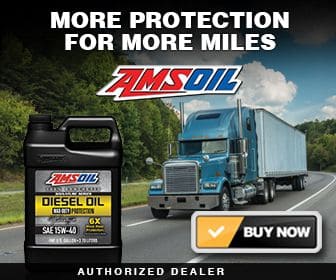
A modern diesel engine can be damaged by choosing the wrong diesel motor oil. For example, if the wrong diesel engine oil is chosen then parts such as the exhaust treatment system and diesel particulate filters may become damaged. There have been a variety of changes and upgrades over the years in regards to engine oil grades for diesel engine applications. From the mid-1950s until the mid-1980s, the API, or the American Petroleum Institute, specified two service classifications for diesel engine oil performance. The two service classifications were API CC or API CD.
API CC engine oils were for non-turbo charged diesel engines. The API CD service classification was appropriate for turbo charged diesel engines. For Detroit Diesel* two cycle engines, the correct motor oil choice was based on the oil’s sulfated ash levels. The API CC met Detroit Diesel* requirements during those early years. Over time, original equipment manufacturers continuously developed diesel engine performance. With that increased performance arose a need for diesel engine oils to match these higher performances.
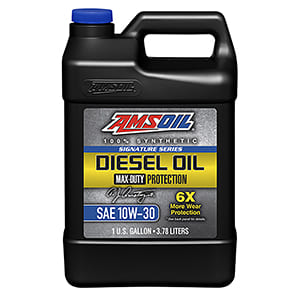
The American Petroleum Institute began to create tougher and stricter diesel oil classifications from 1985 and beyond. Diesel engine oils were required to now offer performance improvements and capabilities such as the ability to reduce oil system sludging, deliver improved oil consumption reduction, reduce piston top land deposits, and provide improved piston ring belt cleanliness. The newer API classifications that were created were CE, CF-4, CF-CF-2, and CG-4.
These newer API service classifications required that diesel engine oils deliver improved performance such as providing less high temperature piston deposits, deliver superior thermal stability and oxidation resistance, protect against valve train wear, and provide better control soot accumulation.
The next phase for diesel engine oil improvements or demands was instigated due to government environmental concerns and also the continuous engine developments by OEMs. To meet these demands, the API released the following diesel motor oil service classifications known as the following: CH-4, CI-4, CJ-4, and the most current CK-4.

These latest API classifications were needed to meet the demands placed on diesel engine oil because of the OEMs adding the following new systems, which were EGR or exhaust gas recirculation systems and the catalyst systems. These new API diesel engine oil classifications came into existence from the early 2000s and onward.
API CK-4, CJ-4, CI-4, and CH-4 series are backward compatible. Backward compatible means that these API service classifications could be used where older or lower classification oils are specified, such as an API CG-4.
API has released a new service classification called API FA-4. This new API classification was formulated for diesel engines that most likely will be designed from 2017 forward. API FA-4 specifies a viscosity of SAE XW-30, specifically only for diesel engine oils. These API FA-4 diesel engine oils will be engineered to deal with greenhouse gas emissions. These specific diesel engine oils will be highly engineered so they can cope with the coming of highly engineered exhaust treatment systems that are planned for the future.
This specific API FA-4 service classification is not backward compatible nor is it interchangeable with any previous API classifications. API FA-4 oils cannot be used instead of nor replace API CK-4, CJ-4, CI-4, and CH-4 oils. API service classifications were specifically designed to deal with the lubrication requirements of North American diesel engines. With that said, original equipment manufacturers worldwide all specify API service classifications when providing requirements for diesel engine oils for their specific diesel engines.

International Specifications
ACEA, which stands for European Automobile Manufacturers Association began establishing motor oil specifications at the beginning of the early 1990s. The ACEA establishes motor oil specifications for cars, light van petrol, and diesel engine oils being classified as A/B. The motor oil specifications for high performance automobiles, light van petrol, and diesel engine oils that require catalyst compatibility utilize a classification of C. Heavy duty diesel motor oils carry the classification E.
ACEA motor oil classifications require engine oils to provide above average stay-in-grade viscosity performance. In addition, they must deliver improved and stringent exhaust treatment system compatibility. A select few of the ACEA motor oil classifications are specifying that these engine oils deliver extended oil drain service and performance.

JASO stands for the Japanese Automotive Standards Organization. The JASO classifications establish that diesel motor oils must meet specific performance parameters, such as piston cleanliness, high temperature oxidation resistance, improved valve train wear, and soot carrying capabilities. Specific tests are conducted for these JASO classifications that are specifically earmarked for particular Japanese diesel motors. Currently there are two JASO classifications which are for low ash formulations where diesel engines use after-treatment devices, such as diesel particulate filters and catalysts.
The JASO DH-2 classification was created for heavy duty diesel motors found in both trucks and buses. The JASO DL-1 classification was created for diesel engine powered passenger cars. Diesel engine original equipment manufacturers create their own diesel engine oil specifications. OEMs such as Mercedes-Benz*, Caterpillar*, Cummings*, Volvo*, Detroit Diesel*, Mac*, Renault*, and Deutz* are just a sampling of these diesel OEMs.
Some OEMs have specifically established a maximum level of sulfated ash/sulfur/phosphorous for their engine oils. These engine oils are also known as “low SAPS.”
Consult Your Owner’s Manual
After reading this blog post, you are now asking the question of what specific diesel motor oil should be chosen. Understand that any engine oil is defined by its performance capabilities and its viscosity. The first step in finding the correct engine oil for your vehicle is to consult your vehicle’s owners manual. The owner’s manual should provide the necessary data to help in choosing the right motor oil. Current diesel engines will offer the latest diesel motor oils that meet current service classifications.

For example, your owner’s manual may list an API CJ-4. If your vehicle is European, then it will list the European ACEA specifications such as E4/E6/E7/E9. Depending on the manufacturer of the engine in your vehicles, you may see the following specifications: CAT* ECF-3, Volvo* VDS-4, or MB-228.51. You might also see a SAPS spec. For older diesel motors, the owner’s manual will show the older API diesel engine oil specs such as API service classification CI-4, API CH-4, or API CG-4.
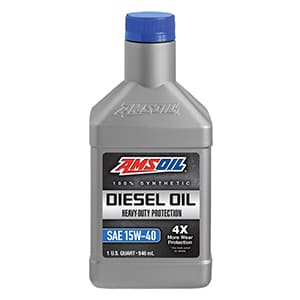
In terms of choosing the appropriate viscosity grade, this will depend on the ambient temperature operating range that your vehicle will be asked to perform in.
Still unsure about the proper choice of engine oil grades for diesel engine operations? If you’re still unsure, it is best to contact your local motor oil representative or dealer. They should be able to recommend the proper motor oil for your vehicle or fleet. If your fleet contains a variety of brands, you may require more than one diesel oil.
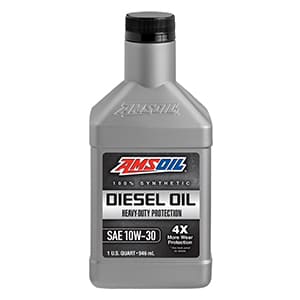
To help you in your search for the best diesel engine oil manufacturer, we recommend AMSOIL. They offer an extensive list of diesel engine oils that meet the latest CK-4 and FA-4 oils. Regardless of the make of your equipment or the year, AMSOIL has the right motor oil for you. In addition, they utilize the finest synthetic base stock oils that will decrease friction and wear, improve fuel economy, and increase power. Also, their chemists formulate their oils with only the finest additive chemistry available. Another added benefit to choosing AMSOIL is they have experts in diesel engines, and they’ll be more than happy to help you choose the right diesel engine oil for your motor.
AMSOIL offers a variety of diesel engine oil grades for diesel engine operations.
*All trademarked names and images are the property of their respective owners and may be registered marks in some countries. No affiliation or endorsement claim, express or implied, is made by their use.
